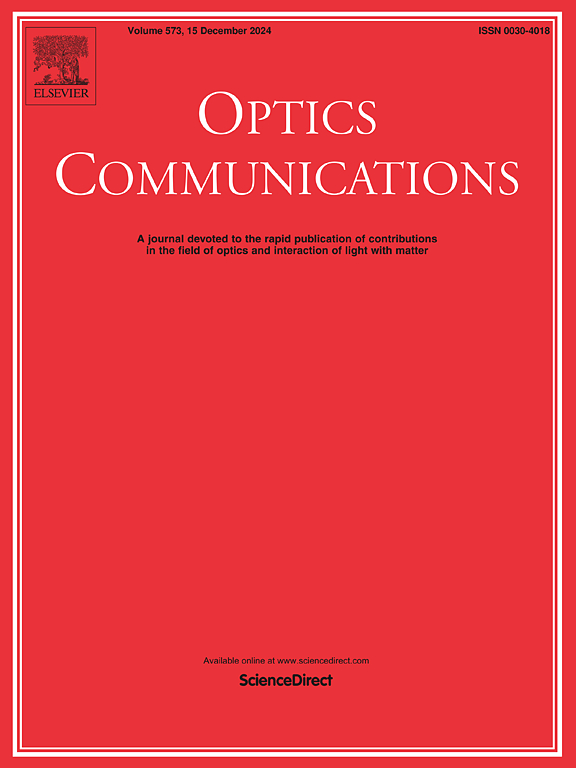Axial optical polarization skyrmion array within tightly focused fields by inversion of dipole antenna radiation
IF 2.5
3区 物理与天体物理
Q2 OPTICS
引用次数: 0
Abstract
Optical skyrmions have gained considerable interest for their robust electromagnetic field configurations. In this study, we demonstrate a novel method to generate axial optical polarization skyrmion structure, including continuous optical skyrmion structure in needle field (8λ) and discrete optical skyrmion array in multifocal field. By combining time-reversal dipole array radiation with vectorial tight-focusing techniques, we achieve controlled formation of both Néel-type and Bloch-type skyrmions. The spatial evolution of the topological structure within the axial optical needle field is examined, and the polarity of the optical skyrmion is periodically modulated by the axial electric field Ez. In the multifocal field, by introducing time-reversal magnetic dipole radiation, we achieve precise control over the skyrmion structures at any pair of focal points, thereby realizing the transformation from Néel-type to Bloch-type configurations. This work providing a theoretical foundation and contributes to the development of methods for constructing and regulating optical topological structures.
偶极子天线辐射反演紧聚焦场内的轴向光偏振skyrmion阵列
光学天幕因其强大的电磁场结构而受到广泛关注。在这项研究中,我们展示了一种新的产生轴向光偏振斯基米子结构的方法,包括针场(8λ)的连续光学斯基米子结构和多焦场的离散光学斯基米子阵列。将时间反转偶极子阵列辐射与矢量紧聚焦技术相结合,实现了nsamel型和bloch型天幕的可控形成。研究了轴向光针场内拓扑结构的空间演化,并在轴向电场Ez的作用下周期性地调制光针的极性。在多焦场中,通过引入时间反转磁偶极子辐射,我们实现了对任意一对焦点上的skyrmion结构的精确控制,从而实现了nsamel型向bloch型构型的转变。这项工作为光学拓扑结构的构造和调控方法的发展提供了理论基础。
本文章由计算机程序翻译,如有差异,请以英文原文为准。
求助全文
约1分钟内获得全文
求助全文
来源期刊

Optics Communications
物理-光学
CiteScore
5.10
自引率
8.30%
发文量
681
审稿时长
38 days
期刊介绍:
Optics Communications invites original and timely contributions containing new results in various fields of optics and photonics. The journal considers theoretical and experimental research in areas ranging from the fundamental properties of light to technological applications. Topics covered include classical and quantum optics, optical physics and light-matter interactions, lasers, imaging, guided-wave optics and optical information processing. Manuscripts should offer clear evidence of novelty and significance. Papers concentrating on mathematical and computational issues, with limited connection to optics, are not suitable for publication in the Journal. Similarly, small technical advances, or papers concerned only with engineering applications or issues of materials science fall outside the journal scope.
 求助内容:
求助内容: 应助结果提醒方式:
应助结果提醒方式:


